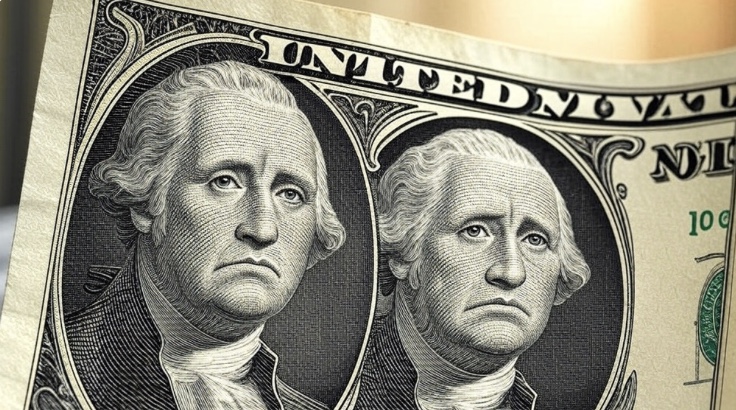To be a currency, crypto has to change.
In the contemporary economic framework, money is defined by its core functions: a medium of exchange, a unit of value, and a store of value. While gold has historically served these roles, it no longer qualifies as money in modern societies.
This essay argues that gold isn’t money because it lacks practical utility in daily transactions, its supply constraints hinder economic growth, and it operates as a commodity rather than a currency in fiat systems, creating volatility and systemic risks. These factors render gold an investment asset, not a functional currency.
For centuries, gold was a currency in coin form. But in the modern world, currency isn’t money. In modern banking, there are two forms of money: bank money and currency. Everything else is not money, it’s a monetary equivalent. If you can spend it, it’s a currency. If it’s something priced in dollars, it’s a monetary equivalent.
How did bank money originate?
The origin of bank money started with merchant banking. Banking centers like Amsterdam, Lisbon and Venice would lend money to merchants and take back a zero coupon note. These notes could be sold but had to settle on settlement dates. In the US the most common note is the mortgage, where a bank creates a debit and credit on their balance sheet. This represents a note in one account and a deposit in the seller’s account.
Historically, gold underpinned monetary systems of many civilizations, culminating in the gold standard adopted by nations like Britain in 1819 and the United States in the late 19th century. Under this system, currencies were pegged to a fixed quantity of gold, allowing convertibility and stabilizing international trade during the classical period from 1871 to 1914.
However, the gold standard was abandoned due to inherent limitations exposed by global events. World War I disrupted it, leading to suspensions as governments needed flexibility to finance wars without gold reserves’ constraints.

The Great Depression further highlighted issues: fixed exchange rates caused deflationary pressures, commodity price collapses, and inability to stimulate economies through monetary expansion. In 1933, the U.S. restricted private gold ownership, and by 1971, President Nixon ended dollar-gold convertibility amid inflation from Vietnam War costs and balance-of-payments deficits.
Today, no country uses the gold standard; fiat currencies, backed by government trust, dominate. Practically, gold fails as a medium of exchange. It is cumbersome to divide, transport, and secure for everyday transactions—imagine paying for groceries with gold flakes. Digital alternatives like credit cards and mobile payments have supplanted any potential role.
Moreover, gold’s finite supply limits economic adaptability. Unlike fiat money, which central banks can expand to counter recessions, gold’s scarcity can cause deflation, where hoarding stifles spending and growth. This rigidity terrified policymakers during crises, prompting the shift to fiat systems for monetary control.
Economically, gold behaves as a volatile commodity, not stable money. Its price fluctuates with market demand, geopolitical tensions, and inflation hedges, inversely correlating with the U.S. dollar but without intrinsic stability. Central banks view gold’s resurgence—evident in BRICS nations accumulating reserves and discussing gold-backed trade—as a threat to fiat dominance, fearing it exposes currency debasement.
If there’s enough liquidity, everything Is money.
This is the essence of the modern market system, and it only discriminates on one thing. Liquidity. For example, the US stock market is hyper liquid. You can sell most shares at near zero markup within seconds and not affect liquidity. (The market price) From this standpoint, there is NO difference between bitcoin and a share of META.
Yet even Basel III’s recognition of gold as a Tier 1 asset underscores its role as a reserve, not circulating money. Legally, taxes treat gold as an asset, not currency, imposing capital gains on sales, deterring transactional use.
Golds other problem is also bitcoins problem.
This is a hard concept to explain especially to non accountants, and as crypto has become more of a religion than an asset, I’m reluctant to try. But here we go.
What happens on a balance sheet.
Accounting is a system of matching. On a balance sheet, it matches assets and liabilities. To simplify, let’s look at current assets and liabilities.
Current assets are cash, marketable securities and accounts receivable. (Money you are owed. Current liabilities are accounts payable and the current portion of long term debt.
For (say) bitcoin to operate as cash, everything else on the balance sheet MUST be in bitcoin. Bitcoin is too volatile to be just cash. Imagine if bitcoin represents cash, it falls in price, and you have to make payroll. Or you have to pay your suppliers who invoiced you. Do they want a currency that just collapsed?
If you think this esoteric, think back to the global financial crisis. At that time, banks said they could only pay 98 cents on the dollar in their money markets. A 2% drop caused a total shitstorm!
I have to admit, I’m not seeing the value of stablecoin for anybody but banks.
Let’s say stable coin IS stable. You give the bank your money and they give you an asset that has no rate of return. They, then take your money and invest that in something that DOES make money and keep the profit.
Think of it this way. $1 invested in a money market account in 1980, adjusted for inflation would be worth $1.65 today. That same dollar in currency form would be worth about 25 cents. To beat inflation you want monetary equivalents, not money.
In conclusion…
Gold’s historical allure masks its modern irrelevance as money. It excels as a hedge against inflation but lacks the divisibility, portability, and flexibility of fiat currencies. As economies evolve toward digital innovations like CBDCs, gold remains sidelined—a relic of past systems, not the future of finance. Embracing this reality ensures stable growth, though it demands vigilance against fiat abuses.
But don’t confuse hyper liquidity with value. If there’s enough liquidity, your garage sale underwear have value.




